When it comes to digital marketing, consistency is key. You need to be consistent with your branding across all channels, from your website to your social media profiles. Failing to be consistent can cause customers and visitors to doubt the identity of your business. This can undo all the hard work you’ve put in so far! Make sure that you are always on the lookout for ways to maintain a strong brand identity and keep your marketing efforts cohesive. This means having a website that is up to date, mobile friendly, and easy to remember. You also need a logo and brand name that are instantly recognizable. Too often, businesses make the mistake of attaching their brand name to a website that looks out of date or unprofessional. Don’t let this happen to you! Make sure your site is modern and looks great on all devices.
15 Digital Content Mistakes That Can Hurt Your Brand


1. Too much promotional content
The 80/20 rule has been cited as the effective social media content ratio. Focus 80% of your posts on informing and entertaining your followers, while just 20% should be about your business. Similarly, the five-three-two rule says for every 10 posts published, five should be curated from others’ content, three should be original to your brand, and two should be personal and fun to humanize your brand.
2. Email inundation
Consider these two eye-opening statistics: 76% of customers expect consistent interaction with a brand regardless of department. Yet only 54% say it seems sales, service, and marketing teams are siloed and don’t share information.
Work across silos to coordinate your email outreach with your audience. If that’s not feasible, update your “unsubscribe” form to give them choices on what content they would like to receive (and not receive.)
3. Overly negative content
Doomscrolling is a thing, but it shouldn’t be something your brand leans into. Though negative content is shared more than positive content, the publisher of that negative content is not necessarily regarded more highly.
I don’t see talking about a customer’s pain points as the same as negative content. If you offer a solution, that’s good marketing. But if you start and end on a negative note, your brand is just being a downer.

https://contentmarketinginstitute.com/articles/digital-content-mistakes-hurt-brand
Google Recommends Original Photos For Product Reviews
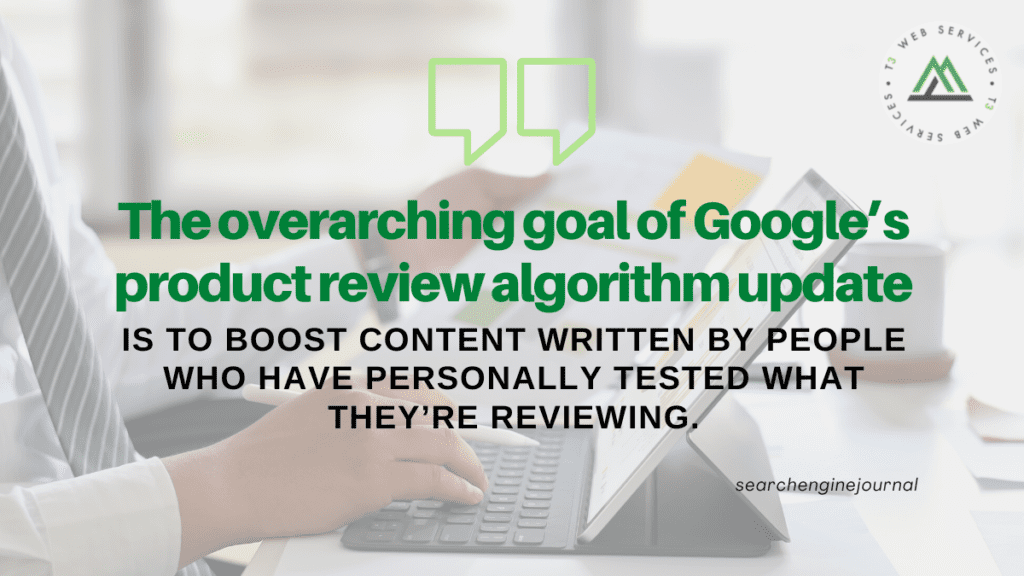

Google’s Search Advocate John Mueller recommends using original photos when publishing product reviews in order to benefit from the algorithm update that rewards in-depth research.
This is stated during the Google Search Central SEO office-hours hangout recorded on February 4.
The overarching goal of Google’s product review algorithm update is to boost content written by people who have personally tested what they’re reviewing.
One way an author can prove they’ve personally tested a product is to take their own photos of it.

https://www.searchenginejournal.com/google-recommends-original-photos-for-product-reviews/437050/
B2B Marketing News: Omni-Channel B2B Sales Insight, Google & Microsoft’s Rising Ad Revenue, & Instagram’s Live-Stream Banners
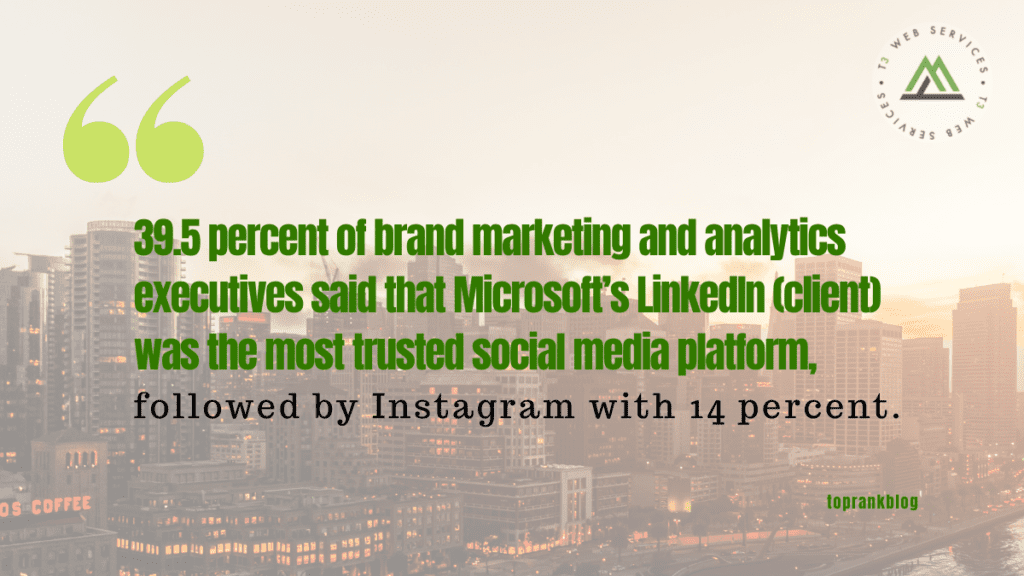

How B2B Businesses Can Get Omnichannel Sales Right
B2B sellers now more often offer digital channels than in-person ones, and recent survey data shows that marketers also find digital channels more effective, and The Harvard Business Review recently examined the power of a more holistic and customer-centric approach to collaboration in B2B. Harvard Business Review
Google parent company Alphabet broke $200 billion in annual revenue for the first time
Google’s parent firm Alphabet topped the $200 billion revenue mark during 2021, a year-over-year rise of some 41 percent to $257 billion, with Google advertising revenue for the fourth quarter of 2021 totaling over $61 billion, Alphabet recently announced. The Verge
Microsoft’s ad revenue hit $10B, and it’s investing — is it a sleeping giant about to wake?
During 2021 Microsoft recorded more than $10 billion in advertising revenue, with its search and news services achieving strong growth of 32 percent over the year, while overall 2021 revenue at the firm rose by 20 percent to $51.7 billion, Microsoft recently announced. Digiday

https://www.toprankblog.com/2022/02/b2b-marketing-news-020422/
How to Use STAT to Discover Extra Value in Your Keyword Data
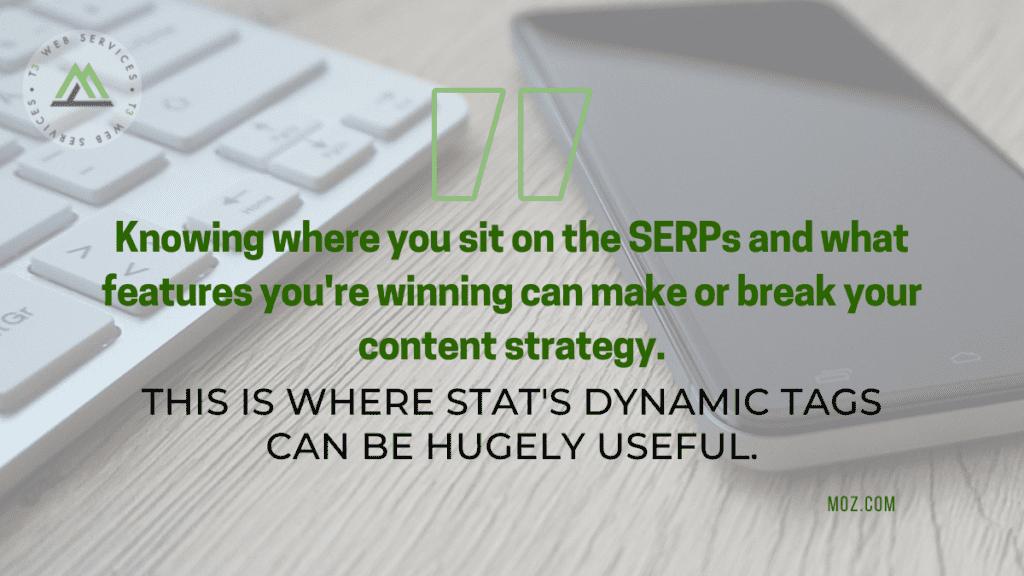

What is STAT?
So what is STAT? If you haven’t come across STAT before, it’s a large-scale rank tracker, but it’s also fantastic for many other things, SERP analysis and intent, a competitive landscape tool. Its value is really how you can dig into the data it provides.
Data views
So we know that organizing your data is key. How do you organize your data so it’s meaningful to you while allowing you to see potential opportunities to quickly report back to a client? In STAT, you can hold all your keyword groups, your tags in a single data view. So keeping selected tags in a data view means you get a single dashboard of metrics for those chosen keyword groups.
Visibility
Another key piece of information is finding out who you’re up against for those keyword sets you just put together. You can use STAT to view share of voice across that specific set of keyword tags or for that entire market. The share of voice metric used in STAT measures the visibility of a given keyword set on Google. This means you can get invaluable insights, such as where competitors are increasing or decreasing in their visibility.

https://moz.com/blog/use-stat-for-keyword-data
How to Prepare for Facebook Audience Targeting Changes
#1: Detailed Targeting Expansion
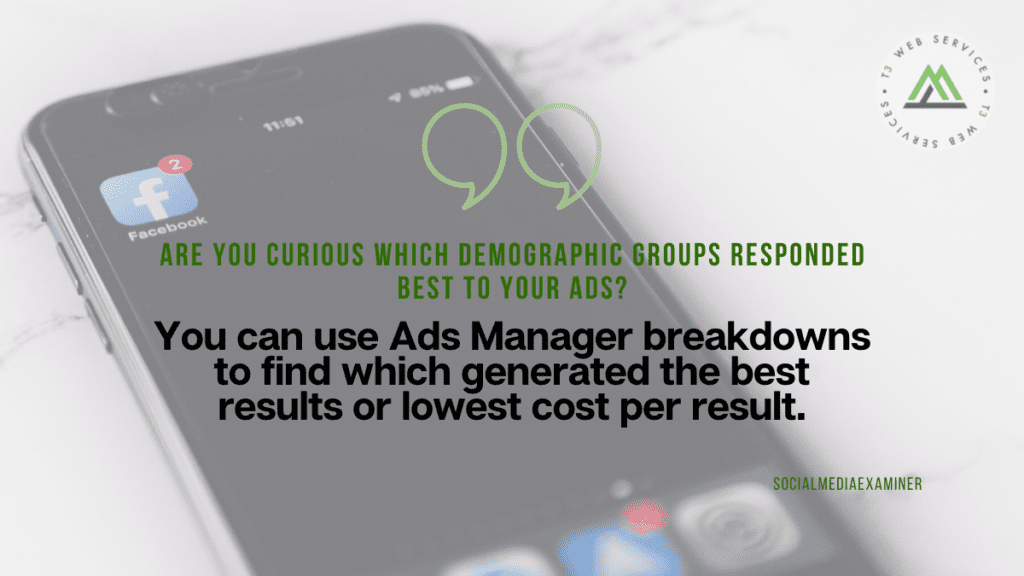

If you had to remove some of your business’ preferred interest-based targeting options, then you might find that your updated audiences are smaller than ideal. Over time, your campaigns may encounter ad fatigue or costs could increase as you run out of people to reach efficiently.
Ads Manager’s detailed targeting expansion option can help. When you switch on this option, you essentially allow Facebook to deliver your ad to people outside of your targeting parameters if the algorithm determines that doing so will improve performance.
#2: Broad Targeting
Are you planning a reach or brand awareness campaign? You can use broad targeting to build the biggest audience possible and avoid any potential issues with interest-based targeting. To leverage broad targeting, use demographic data only—essentially age, gender, and location.
Whether you create a new saved audience in Audience Manager or Ads Manager, you can choose from four location targeting options:
- People living in or recently in the location
- People living in the location
- People recently in the location
- People traveling in the location
To make your location targeting a bit more specific, you can always exclude select areas. For example, you may want to avoid targeting certain cities, regions, or states that your business doesn’t serve or where you haven’t seen results in previous campaigns.

https://www.socialmediaexaminer.com/how-to-prepare-for-facebook-audience-targeting-changes/
Google adds Journeys to Chrome: search your history by topic
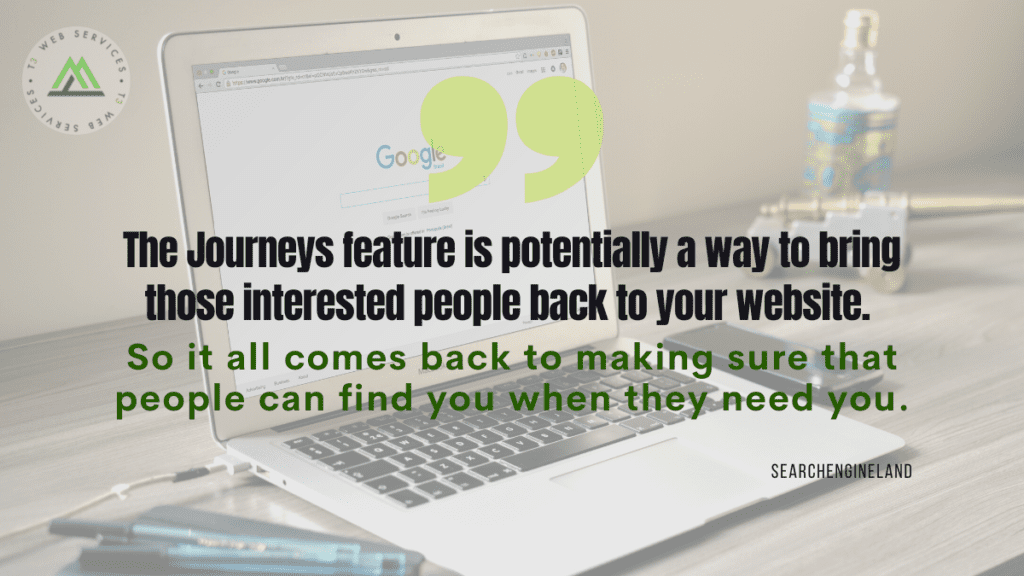

What is Journeys? Journeys is a Google Chrome desktop feature. It groups pages from your search history by topic or intent, providing a more helpful user experience than just showing a chronological list of pages.
How it works. Working off of Google’s “travel” example, there are two ways to use Journeys in Chrome:
- Option 1. Type a topic (e.g., “travel”) into your search bar and click on “Resume your research”.
- Option 2. Go to History > Show Full History. In the search box, you would type in a topic. In Google’s example, the query is “travel.” The user will then see a list Based on activity related to “travel” that is pulled from search history, including when it was searched for (in this example, 1 week ago). Google said it also take into acount how often you’ve interacted with a website when it shows you results. Journeys also shows Related searches beneath the grouped search history.

https://searchengineland.com/google-chrome-journeys-380104
Google Ads for eCommerce: How to Make Your Website Conversion-Ready
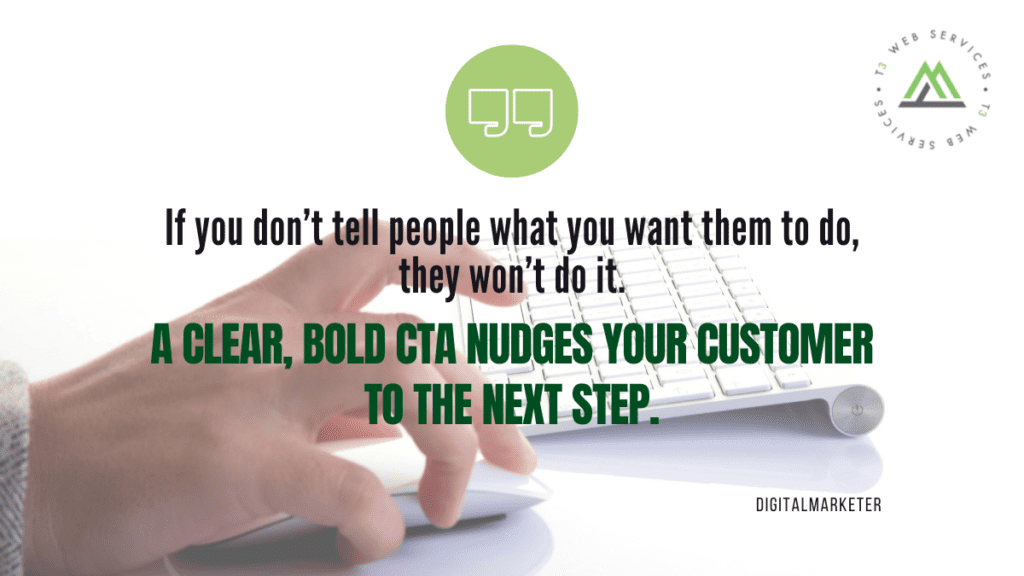

First Up: Website CRO (Conversion Rate Optimization) Best Practices
Here are some CRO best practices to ensure your site is ready to make sales:
The Big Three:
1. Website Issues and Errors
You can’t drive traffic to a broken website. So, it’s crucial to ensure you catch any website issues or errors:
- Frequently (at least once a month) check your site and make sure everything is working properly and there are no high-risk issues and errors.
- Schedule a website audit at least once a month.
2. Website Speed
Website speed has a massive impact on your quality score; in fact, it is considered slightly more important than content(!) according to Google. A few things to consider:
- Mobile users are going to be less tolerant of slower websites due to the smaller size of the device and often slower connection.
- The biggest contributing factor for slow sites are large image sizes.
3. Mobile Engagement
- 60-65% of website visits are done on mobile devices. So ensure your site is mobile-friendly!
- Look at your conversion path: although many purchases happen on desktop computers, research is often done on mobile devices. In other words, consider each step of your buyer’s journey so you can make it as effortless as possible.

https://www.digitalmarketer.com/blog/google-ads-for-ecommerce-prerequisites-3/


Leave a Reply